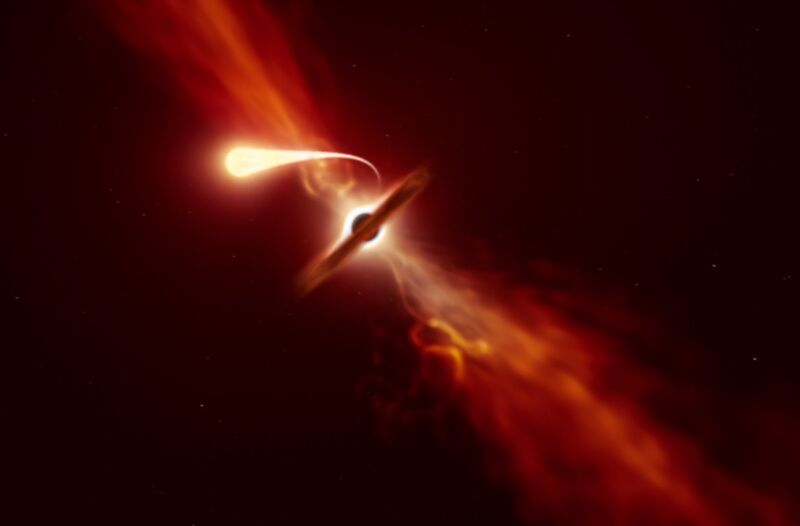
Enlarge / Illustration of a star being spaghettified as it’s sucked in by a supermassive black hole during a tidal disruption event (TDE). (credit: ESO/M. Kornmesser)
Earlier this year, astronomers picked up an unusually bright signal in the X-ray, optical, and radio regimes, dubbed AT 2022cmc. They've now determined that the most likely source of that signal is a supermassive black hole gobbling up a star in a "hyper-feeding frenzy," shooting out jets of matter in what's known as a tidal disruption event (TDE). According to a new paper published in the journal Nature Astronomy, it's one for the record books: the furthest such event yet detected at roughly 8.5 billion light-years away.
The authors estimate the jet from this TDE is traveling at 99.99 percent the speed of light, meaning the black hole is really chowing down on its stellar repast. “It’s probably swallowing the star at the rate of half the mass of the Sun per year,” said co-author Dheeraj “DJ” Pasham of the University of Birmingham. “A lot of this tidal disruption happens early on, and we were able to catch this event right at the beginning, within one week of the black hole starting to feed on the star.”
As we've reported previously, it's a popular misconception that black holes behave like cosmic vacuum cleaners, ravenously sucking up any matter in their surroundings. In reality, only stuff that passes beyond the event horizon—including light—is swallowed up and can't escape, although black holes are also messy eaters. That means that part of an object's matter is ejected in a powerful jet.
Read 6 remaining paragraphs | Comments
